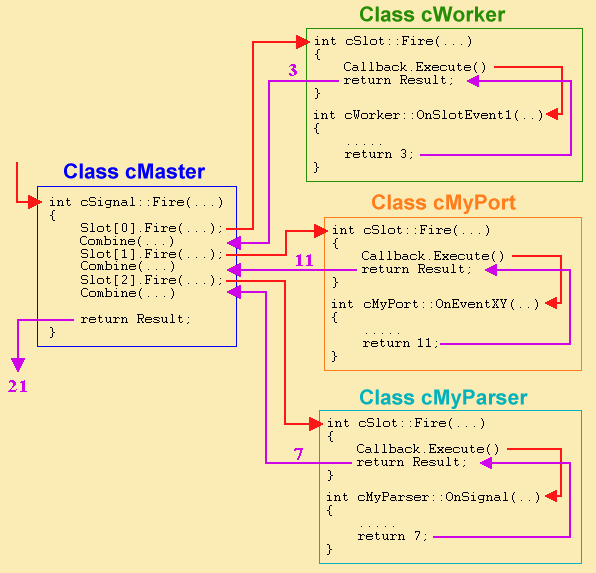Qt Slot Execution Order
- In Qt v4.5 and earlier: No, the order is undefined as can be seen in the documentation here: If several slots are connected to one signal, the slots will be executed one after the other, in an arbitrary order, when the signal is emitted. Edit: From version 4.6 onwards this is no longer true. Now the slots will run in the order they are connected.
- Connect (button, SIGNAL (clicked ), qApp, SLOT (quit )); Connections can be added or removed at any time during the execution of a Qt application, they can be set up so that they are executed when a signal is emitted or queued for later execution, and they can be made between objects in different threads.
- Qt already provides a work flow for safely execute code in threads which can be found in their documentation, but it basically consists in: Create a 'worker' object which implements the code to be executed in a thread in Qt slots. Use Qt signals within the 'worker' object to notify when the work is done.
- Traditional syntax: SIGNAL and SLOT QtCore.SIGNAL and QtCore.SLOT macros allow Python to interface with Qt signal and slot delivery mechanisms. This is the old way of using signals and slots. The example below uses the well known clicked signal from a QPushButton. The connect method has a non python-friendly syntax.
Introduction

Qt is a cross-platform C framework for creating GUI applications. Qt uses its own build system, qmake, and also supports building with CMake starting from the version Qt4. A pure Qmake project can't be imported in CLion directly. However, when converted into CMake, it can be opened and managed as a regular CMake application.
Remember old X-Windows call-back system? Generally it isn't type safe and flexible. There are many problems with them. Qt offers a new event handling system: signal-slot connections. Imagine an alarm clock. When alarm is ringing, a signal is being sent (emit). And you're handling it in a slot.
- Every QObject class may have as many signals and slots as you want
- You can emit signals only from within that class, where the signal is located
- You can connect signal with another signal (make chains of signals);
- Every signal and slot can have unlimited count of connections with other.
- ATTENTION! You can't set default value in slot attributes e.g. void mySlot(int i = 0);
Connection
You can connect signal with this template:
QObject::connect (
);
You have to wrap const char * signal and const char * method into SIGNAL() and SLOT() macros.
And you also can disconnect signal-slot:
QObject::disconnect (
);
Deeper
Widgets emit signals when events occur. For example, a button will emit a clicked signal when it is clicked. A developer can choose to connect to a signal by creating a function (a slot) and calling the connect() function to relate the signal to the slot. Qt's signals and slots mechanism does not require classes to have knowledge of each other, which makes it much easier to develop highly reusable classes. Since signals and slots are type-safe, type errors are reported as warnings and do not cause crashes to occur.
For example, if a Quit button's clicked() signal is connected to the application's quit() slot, a user's click on Quit makes the application terminate. In code, this is written as
connect(button, SIGNAL (clicked()), qApp, SLOT (quit()));
Connections can be added or removed at any time during the execution of a Qt application, they can be set up so that they are executed when a signal is emitted or queued for later execution, and they can be made between objects in different threads.
The signals and slots mechanism is implemented in standard C++. The implementation uses the C++ preprocessor and moc, the Meta Object Compiler, included with Qt. Code generation is performed automatically by Qt's build system. Developers never have to edit or even look at the generated code.
In addition to handling signals and slots, the Meta Object Compiler supports Qt's translation mechanism, its property system, and its extended runtime type information. It also makes runtime introspection of C++ programs possible in a way that works on all supported platforms.
Qt Signal Slot Execution Order
To make moc compile the meta object classes don't forget to add the Q_OBJECT macro to your class.

In this tutorial we will learn How to use signal and slots in qt.
File->New File or Project…
Applications->Qt Gui Application->Choose…
We keep the class as MainWindow as given by default.
SignalsAndSlots.pro
2 4 6 8 10 | #include <QApplication> intmain(intargc,char*argv[]) QApplicationa(argc,argv); w.show(); returna.exec(); |